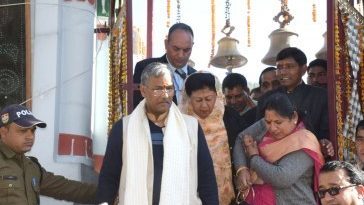Faster First Aid Can Save Lives
by Dr. G Satish Reddy, MS,M.Ch(Ortho) U.K. ; Senior Consultant Orthopedic Surgeon, Joint Replacement Surgeon and Specialist in Sports Medicine Aster Prime Hospital, Ameerpet, Hyderabad
Thousands of people die in road accidents every year. At the same time millions are injured in accidents and suffer from permanent or temporary disability or another chronic health disorder. Health experts make it clear that only rapidly providing first aid can help prevent death or reduce the impact of disability, especially in such cases. This first aid, provided by a hospital or health professional as soon as it becomes available, works perfectly in reducing the severity of human life or injury.
What to do in this direction …
As soon as the person arrives at the scene of the accident, in order to provide assistance, he must first make sure that he is not in any danger and immediately pull the injured person out of the scene and put him in a safe place. If not, the injured person should be kept in a safe place and the ambulance should be informed immediately and first aid should be started immediately.
The injured person should be unconscious, breathing air, and if there are no visible injuries, his head should be slightly bent, his legs slightly bent and his hands should be constantly monitored until an ambulance arrives. If the injured person does not breathe, CPR (Cardiopulmonary resuscitation) should be started immediately. If you are not fully aware of giving CPR (Cardiopulmonary resuscitation) then pressing on the heart with your hands may have some effect.
If you are not aware of any broken bones anywhere in the body, you should definitely help him with the feeling that the bones are broken or you may have unknowingly increased the injury. It is best to keep the limbs straight until he is rushed to the hospital so that others can be seen without getting injured. If an injury is found, the limb should be tightly bandaged or wrapped with a cloth to reduce the impact of the injury.
If there is any puncture in the body, an attempt can be made to remove it. However, no attempt should be made to replace a broken or injured bone in this attempt. It should only be done under the supervision of a qualified physician. In cases where the bone is broken and the skin is injured on the side, the wound can be cleaned to some extent.
In case the injured person does not show any major pain or external injuries or the ambulance is late in arriving, an attempt should be made to rush him to the hospital by the available means of transport immediately without delay.
Another important note is that the injured person should not drink enough fresh water and should not be given the original food items. Excessive intake of water increases the risk of it reaching the lungs of the injured person. The longer the diet, the more likely it is that the healing of the injured person, especially surgeries, will be delayed.
What we see in the injured person is blood or hemorrhage, which we must definitely focus on. In most cases there is a risk of overestimating this bleeding and focusing too much on stopping it and diverting vision from other dangerous injuries. Therefore, before focusing on the bleeding, it is important to look closely at whether the person has any other serious injuries. A good solution is to apply a pressure bandage to stop the bleeding after proper care has been taken. It can be prevented by tightly bandaging the bleeding area using the available hygienic cloth. If bleeding is occurring in multiple areas then focus on the smaller ones after tightening the bandage in the area most dangerous at first.
Excessive external injuries, such as broken bones or deep incisions, can cause more bleeding. They may not stop even if they are tightly bandaged to stop it. Especially for such wounds on the hands and feet, the artery called the tornicut should be bandaged to stop the bleeding from the adimi injury. However it may not be available in all cases and may only be in the ambulance if an emergency medical team is available. The stick can be bandaged using a cloth in situations where it is not available. However this should only be done with full awareness or it may still become dangerous.
Materials trapped in longer wounds should be kept intact. Squeezing or removing them can sometimes cause the wounds to become larger or cause more bleeding. Only after a thorough examination of the material and making sure that there is no danger should a bandage be prepared to stop the bleeding before removal.
There is no doubt that the presence of those who are aware of the above issues immediately after the accident can stop many deaths. That is why it is important for everyone to have awareness and training on first aid. Thereby preventing many deaths or injuries from becoming disabled.




